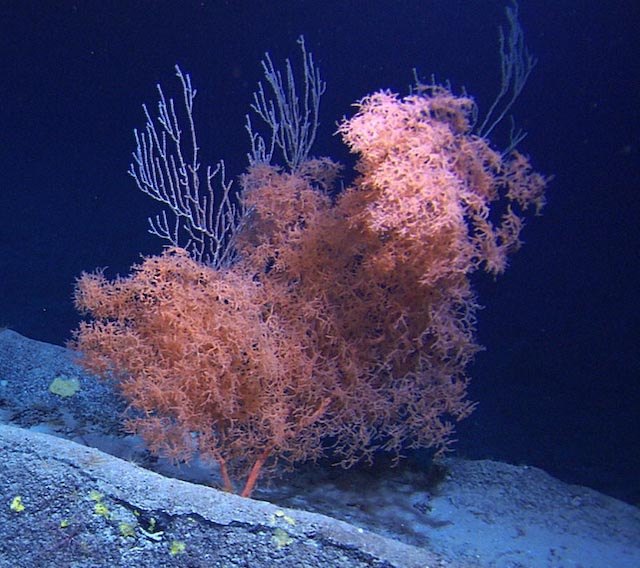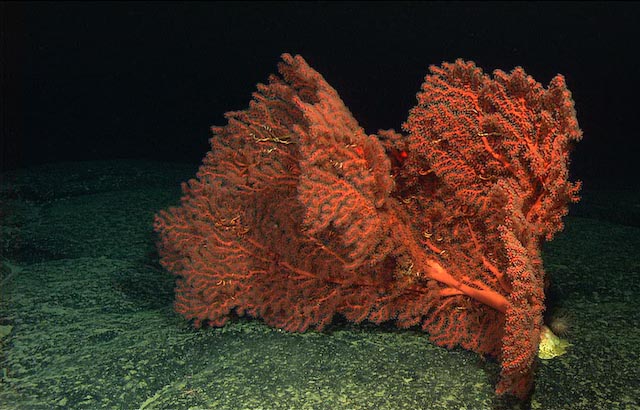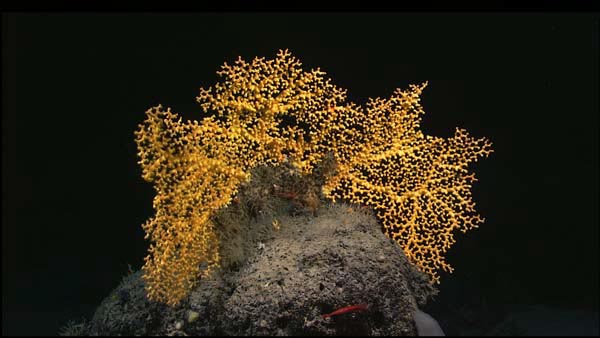What is a coral?
Hang on to your hat – this apparently simple question actually requires a lengthy answer. Why? Mainly because the term “coral” is broadly applied to many different, but related, invertebrate animals. That’s right: corals are not plants or algae, they are animals – they have a “mouth” and rudimentary muscles and nerves. So, I could answer “a coral is an invertebrate animal that has a jelly-like body with a “mouth” surrounded by tentacles that lives in the ocean. Corals usually have a skeleton and usually grow as a colony.” If you want a better, more complete answer, click on the "Tell me more about corals " link above; or, if you just want to see some cool photos of deep-sea corals, choose the "Just show me some cool photos!!" link. If you want to know how we sample these corals (and get these great photos more than 1 mile deep!), click on the "Sampling deep-sea corals" link above.

A black coral (Antipatharia), Leiopathes sp. , grows in front of a bamboo coral at 1440 meters depth on Manning Seamount. Many deep-sea black corals have orange- or reddish-colored tissue. (Image copyright of the Mountains in the Sea Research Team; IFE; and NOAA)

A bubble-gum coral (Octocorallia), Paragorgia sp., at 1900 meters depth on Balanus Seamount. (Image copyright of the Deep Atlantic Stepping Stones Research Team; IFE-URI; and NOAA)

A stony coral (Scleractinia), Enallopsammia rostrata, at 1485 meters depth on Yakutat Seamount. (Image copyright of the Deep Atlantic Stepping Stones Research Team; IFE-URI; and NOAA)